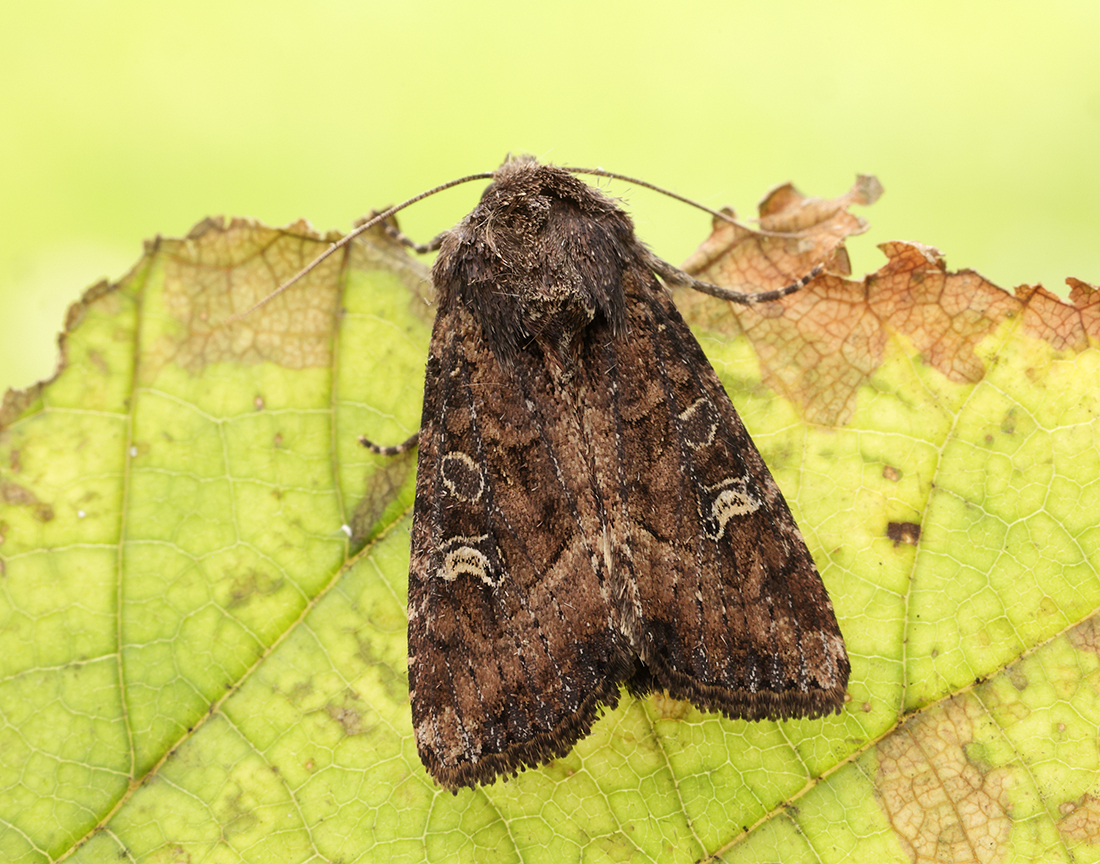Identification
A narrow, rather crescent-like kidney-mark on dark chocolate-brown or reddish-brown forewings and a pale outer cross band. A whitish line runs from the oval to the kidney-mark where it forks. Haworth’s Minor is similar but is smaller and lacks the pale outer cross band.
Recording Method.
Attracted to light, also comes to sugar and flowers.
Life cycle
One generation. Overwinters as an egg. Larvae are present during March to July, where it feeds inside the leaves, stems and roots of its foodplants.
Larval fooplants
Larvae feeds on Yellow Flag Iris and Great Fen Sedge, though the latter species is rare in Dumfries and Galloway. Possibly also Purple Moor-grass.
Habitat
Fens, marshes, reedbeds and wet woodland.
History
Lennon (1863) stated that it was not common, but that it had occurred at Tinwald Downs (VC72). Sir Arthur Duncan (1909-84) during his lifetime had found it at Closeburn and Tynron (VC72).
During 1974-92 just three of the seven Rothamsted stations recorded it and that was only twelve times. The sites were Gatehouse of Fleet and Mabie Forest (VC73) and Caerlaverock (VC72). During regular trapping on the Hensol Estate/Laurieston in the early 1980s it was recorded just six times.
During a three day visit in August, 1987, Bernard Skinner found it at Sandhead, the first record for Wigtownshire. It has since been recorded twice more, being found at Torrs Warren in 1997 and trapped on Forest Moor in 2006.
From 1992-2001 forty records came from Kirkton (VC72), the next most popular sites between 1992-2010 were Castle Loch at Lochmaben (VC72), Auchencairn and Mersehead RSPB (VC73). A small scattering of further records, same period, were mostly from Kirkcudbrightshire.


















